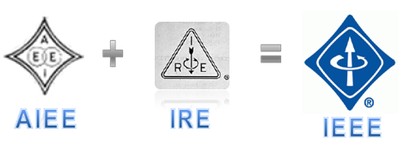IEEE
IEEE was originally founded by the merge of two large associations: the IRE (Institute of Radio Engineers) and the AIEE (American Institute of Electrical Engineers). Through the help of leadership from the two societies, and with the applications of its members’ innovations to industry, electricity wove its way more deeply into every corner of life, through television, radar, transistors, and computers. Increasingly, the interests of the societies overlapped.
Membership in both societies grew, but beginning in the 1940s, the IRE grew faster and in 1957 became the larger group. On 1 January 1963, the AIEE and the IRE merged to form the Institute of Electrical and Electronics Engineers, or IEEE. At its formation, IEEE had 150,000 members, 140,000 of whom resided in the United States.

Region 9
When the IEEE was formed by merger of the AIEE and IRE, in addition to the Regions in the United States and Canada, the “rest of the World” was named “Region 9”. At that time in Latin America existed one AIEE Section in Mexico and four IRE Sections in Buenos Aires (Argentina, 1939), Rio de Janeiro (Brazil, 1956), Colombia (1958) and Chile (1961).
In 1965 / 66 the IEEE reorganized its geographic structure. The new-renamed Region 9 was defined to include All the Americas excepting Canada and the United States;. As two new IEEE Sections had already been formed in Puerto Rico in 1964, and Sao Paulo in 1966, the new “Region 9 IEEE Latin America” consisted now of 7 Sections. The new Region would start formally on January 1, 1967.
El Salvador Section
IEEE El Salvador Section was oficially formed in 1986. Not much after that, on November 18th, 1988 the IEEE Universidad de El Salvador Student Branch was founded and since then it keeps like one of the most active groups in the country.
[gview file=”https://edu.ieee.org/sv-ues/wp-content/uploads/sites/406/2016/01/Certificado-de-fundación-de-IEEE-UES.pdf”]
